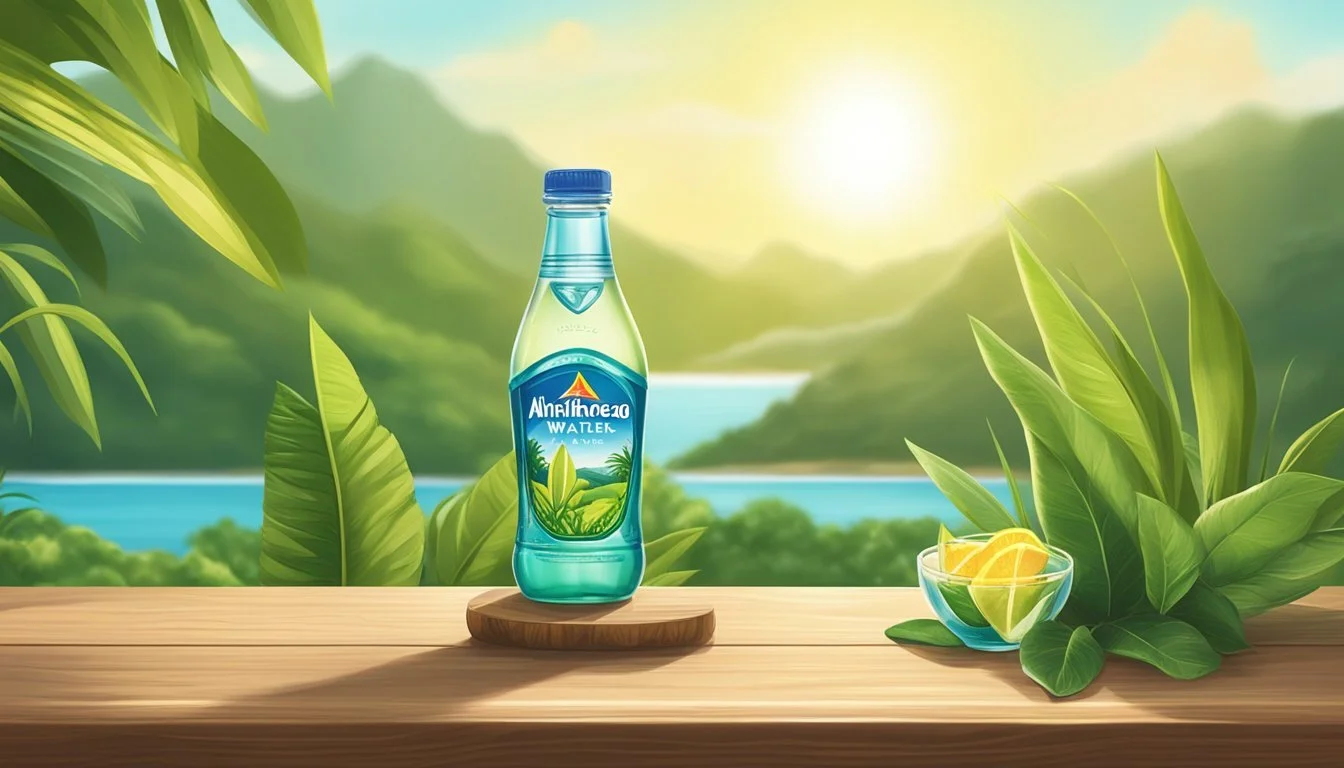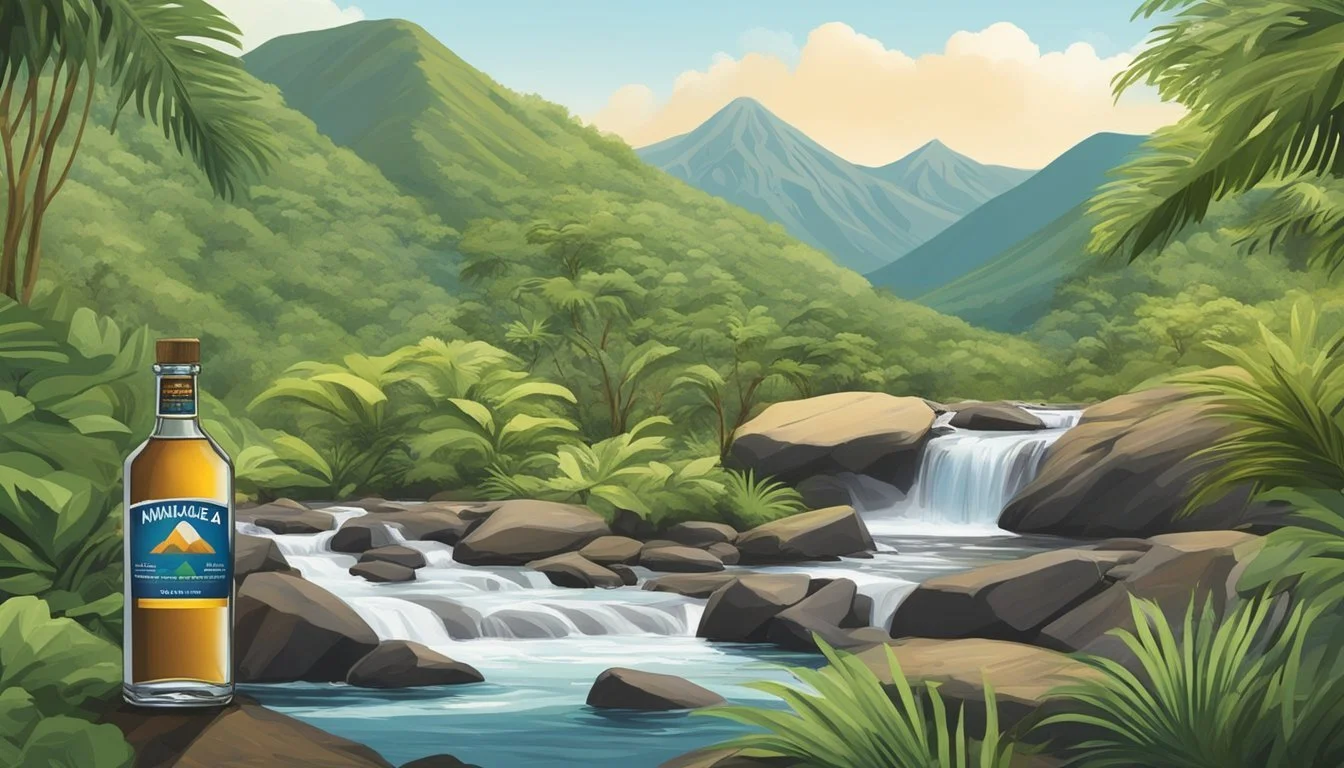Arrowhead vs. Waiakea
Comparing Quality and Taste
When it comes to choosing the best bottled water, the debate between Arrowhead and Waiakea often arises, each offering distinct qualities that appeal to different preferences. Arrowhead, known for sourcing its water from the pristine mountain springs in the Western United States, provides a classic and trusted option for hydration. Its clean, refreshing taste has made it a staple choice for many.
On the other hand, Waiakea water stands out with its unique volcanic filtration process that enhances its mineral content and pH balance. This Hawaiian brand prides itself on sustainability and its naturally alkaline water, which is marketed as having several health benefits. For those looking for a premium and eco-friendly option, Waiakea might be the better choice.
Comparing the two, it can be challenging to declare a definitive winner, as personal preference and specific values such as taste, health benefits, and environmental impact play significant roles. Ultimately, while Arrowhead offers a reliable and accessible option, Waiakea is favored for its distinct taste and sustainability practices.
Understanding Bottled Water
This section provides an overview of bottled water, elaborating on its basic characteristics, sources, comparison with tap water, and different types available in the market.
The Basics of Bottled Water
Bottled water is a popular beverage choice due to its convenience and perceived purity. It's packaged in plastic or glass bottles and sold commercially. The market for bottled water includes brands that offer various types such as spring water, mineral water, and alkaline water.
These waters can differ significantly in terms of taste, mineral content, and added health benefits. Consumers often consider factors like pH levels, mineral content, and sustainability practices when choosing their preferred bottled water.
Sources of Bottled Water
The source of bottled water varies by brand. Spring water originates from underground formations and must flow naturally to the surface or be collected via a borehole.
Mineral water, on the other hand, contains minerals and trace elements from its source and is often bottled at the spring. Water sources can influence the taste and mineral content.
Bottled water can also be purified water, sourced from public water supplies and subjected to processes like distillation, deionization, or reverse osmosis to remove impurities. These sources ensure the bottled water meets safety and quality standards.
Bottled Water vs. Tap Water
One key difference between bottled and tap water relates to taste and convenience. Tap water is more regulated with stringent quality checks but may have contaminants like chlorine or lead, depending on the local infrastructure.
Bottled water offers reliable consistency in taste and has fewer possible contaminants. Additionally, it can provide added minerals or alkalinity that may not be found in tap water.
Cost and environmental impact are other considerations. Bottled water is typically more expensive and has a larger carbon footprint due to production and transportation.
Different Types of Bottled Water
There are several types of bottled water, each catering to different consumer preferences.
Spring Water: Known for its natural sourcing and mineral content.
Mineral Water: Contains naturally occurring minerals and is often bottled at the source.
Alkaline Water: Has a higher pH, which some believe provides health benefits.
Sparkling Water: Contains carbon dioxide, either naturally occurring or added, for carbonation.
Purified Water: Has gone through purification processes to remove impurities and contaminants.
The type of bottled water chosen can depend on taste preference, perceived health benefits, and specific mineral content.
Familiarity with these types allows consumers to make informed purchasing decisions based on their needs.
Branding and Market Presence
When comparing Arrowhead and Waiakea, distinct branding strategies and market presence play pivotal roles in their appeal and customer base.
Overview of Water Brands
Arrowhead and Waiakea represent two divergent approaches within the bottled water industry. Arrowhead, established and traditional, contrasts with Waiakea’s modern, eco-friendly image. These differences are integral to their market positioning and customer perception.
Arrowhead's Position in the Market
Arrowhead, a veteran in the bottled water sector, is recognized for its long-standing presence and extensive distribution. Originating from natural springs, it emphasizes purity and heritage. Its branding highlights the Rocky Mountain sources, capitalizing on a narrative of natural freshness. Distribution: Arrowhead benefits from a broad distribution network across the U.S., including supermarkets and convenience stores. Target Market: It appeals to consumers who prioritize tradition and reliability.
Waiakea's Market Strategy
Waiakea, in contrast, differentiates itself through an emphasis on sustainability and health benefits. Bottled at the source in Hawaii, it claims volcanic filtration for added minerals and a distinctive taste. Eco-Friendly Initiatives: Waiakea boasts carbon neutrality and utilizes fully recyclable packaging. Community Impact: It donates a portion of its revenue to global and Hawaiian nonprofits, enhancing its brand appeal to socially conscious consumers. Target Market: Waiakea targets environmentally aware customers who seek premium, ethically sourced water products.
Quality and Safety Standards
Both Arrowhead and Waiakea claim to maintain high quality and safety standards to provide safe and beneficial drinking water. This section examines their approaches to water quality, the mineral content and health benefits they offer, and any potential contaminants.
Ensuring Water Quality
Arrowhead and Waiakea adhere to strict guidelines set by the Environmental Protection Agency (EPA) and other regulatory bodies. Arrowhead sources its water from springs, ensuring a natural filtration process.
Waiakea's water undergoes a unique filtration process through Hawaiian volcanic rock, adding specific minerals and purity. Both brands prioritize regular testing and monitoring to maintain safety and quality.
Waiakea’s Hawaiian volcanic water is also certified as CarbonNeutral®, reflecting its commitment to environmental safety alongside quality.
Mineral Content and Health Benefits
Mineral content is critical for health benefits in bottled water. Arrowhead water is known for its balanced mix of minerals, including calcium, magnesium, and potassium.
These electrolytes are beneficial for hydration and overall health. Waiakea water is enriched with natural minerals such as silica, which is believed to promote bone health. The pH level of Waiakea water is 8.8, indicating an alkaline composition that can aid in neutralizing acidity in the body.
The mineral diversity offered by both brands contributes positively to health beyond basic hydration.
Contaminants and Safety Concerns
Contaminants in bottled water are a significant concern. Recent studies and reports, including those from Consumer Reports, have highlighted issues such as the presence of PFAS chemicals in several bottled water brands, pointing out potential risks.
While not all brands are affected, the presence of heavy metals like arsenic and lead, as well as other contaminants like mercury, can pose serious health risks.
Both Arrowhead and Waiakea emphasize rigorous testing protocols to detect and mitigate contaminants. Arrowhead’s recent records show compliance with safety standards, while Waiakea markets its pristine filtration through volcanic rock as a safeguard against these harmful substances.
Environmental Considerations
Arrowhead and Waiakea have distinct approaches to sustainability and environmental impact. These differences are evident in their packaging choices and the ways they source their water.
Packaging and Sustainability
Arrowhead predominantly uses plastic bottles, although some variants are available in glass. While plastic bottles are lightweight and convenient, they contribute significantly to pollution if not recycled properly. Arrowhead has made efforts to increase the recyclability of its bottles and reduce plastic usage, but achieving eco-friendly packaging remains a challenge.
Waiakea, on the other hand, uses recyclable plastic bottles that are also CarbonNeutral® certified. They emphasize sustainability by incorporating 25% post-consumer recycled (PCR) content in their packaging. Additionally, Waiakea’s bottles are fully recyclable and BPA-free, bolstering their claims of supporting better environmental practices.
Water Sourcing and Ecological Impact
Arrowhead sources its water from multiple springs across the United States. This wide-range sourcing can impact local ecosystems, especially in regions facing water scarcity. The transportation and extraction processes also have environmental implications, potentially affecting both local wildlife and community water supplies.
Waiakea sources its water from a single, natural aquifer in Hawaii. This water is naturally filtered through volcanic rock, which Waiakea claims ensures a pristine and sustainable source. Moreover, Waiakea donates over 5% of its revenue to nonprofit organizations in Hawaii and other regions, aiming to offset its ecological footprint and support environmental conservation efforts.
Consumer Experience
Assessing the consumer experience for Arrowhead and Waiakea involves examining taste profiles, understanding water labels, and customer reviews. Each aspect offers insight into what makes these bottled waters unique and preferred by different consumers.
Taste Profile and Preferences
Arrowhead's taste profile is characterized by a crisp and clean flavor, typical of spring water sourced from the mountain regions in the Western United States. Reviews often highlight its refreshing quality and neutral taste.
Waiakea, on the other hand, offers a distinct taste influenced by volcanic rocks in Hawaii. Consumers often describe Waiakea as having a smooth, slightly sweet flavor with a hint of minerals. This unique taste appeals to those looking for a more premium and exotic water experience.
Understanding Water Labels
Reading water labels provides essential information about the source, mineral content, and any added ingredients. Arrowhead's label indicates it is 100% mountain spring water, which assures purity and consistency.
Waiakea's label not only emphasizes its Hawaiian volcanic source but also highlights its naturally occurring electrolytes and alkaline pH level of 8.2. This marketing appeals to health-conscious consumers who prioritize mineral content and alkalinity in their drinking water.
Customer Reviews and Ratings
Customer reviews and ratings offer insightful feedback on these brands. Arrowhead commonly receives praise for its availability and affordability but receives mixed reviews regarding its taste when contrasted with other premium brands.
Waiakea, in comparison, garners high marks for its unique taste and brand ethos, including sustainability practices. Consumer Reports may point out the higher price point, yet many loyal customers find the flavor and ethical considerations worth the cost.
By examining these elements, consumers can better understand which bottled water, Arrowhead or Waiakea, best suits their taste and lifestyle preferences.
Filtration and Purification Processes
Both Arrowhead and Waiakea utilize intricate methods to ensure the purity and quality of their bottled water, employing different filtration and purification technologies to meet their standards.
Reverse Osmosis and Its Effectiveness
Arrowhead employs a specific reverse osmosis process. This method effectively reduces total dissolved solids (TDS), ensuring contaminants and impurities are minimized.
Reverse osmosis works by forcing water through a semi-permeable membrane, filtering out particles larger than water molecules. It’s known for producing water that is highly purified. The effectiveness of this method is enhanced when combined with additional techniques.
Natural Filtration Through Aquifers
Waiakea sources its water from a natural volcanic aquifer in Hawaii. This process involves groundwater naturally filtering through porous volcanic rock, which removes impurities and enriches the water with minerals.
Natural filtration through aquifers is valued for maintaining the water's original mineral content, contributing to its unique taste and properties.
Advanced Technologies in Water Purification
Arrowhead also utilizes technologies beyond reverse osmosis, including ultraviolet light exposure to eliminate any remaining bacteria. This process ensures no harmful microorganisms are present in the final product.
In contrast, Waiakea emphasizes its natural purification methods but also ensures purity by bottling directly at the source. This minimizes contamination risks and maintains freshness. Advanced techniques like ionization are also used to enhance the water's alkalinity and mineral content.
These advanced methods complement the primary filtration systems, ensuring both Arrowhead and Waiakea deliver high-quality bottled water. Each brand leverages different approaches to achieve their standards, reflecting their unique water sources and processing philosophies.
Comparative Analysis
Arrowhead and Waiakea are two prominent bottled water brands each with unique attributes. Examining these brands reveals key differences in origin, source, taste, mineral content, packaging, and consumer convenience.
Arrowhead vs. Waiakea: A Detailed Comparison
Arrowhead sources its water primarily from springs located in the western United States. Waiakea, on the other hand, originates from the base of the Mauna Loa volcano in Hawaii.
Both brands have distinct profiles, with Arrowhead emphasizing local spring sources and Waiakea promoting volcanic filtration and natural alkalinity.
Origin and Source Comparison
Arrowhead: The water comes from multiple springs in California and nearby states. These springs are selected for their natural purity and regional accessibility.
Waiakea: This brand's water is sourced from snowmelt and rain that filters through 14,000 feet of volcanic rock. This process is touted for enhancing its natural minerals and creating a unique alkalinity.
Taste and Mineral Content
Arrowhead offers a light and clean taste, attributed to its mineral content, which includes calcium, magnesium, and sodium in modest quantities.
Waiakea has a slightly alkaline pH, typically around 8.2. The volcanic filtration process imparts a smooth taste and a rich profile of essential electrolytes like potassium and calcium.
Packaging and Environmental Concerns
Arrowhead: Uses standard plastic bottles but has initiatives to incorporate recycled materials. They have faced criticism over environmental impact, particularly concerning local water sources.
Waiakea: Known for eco-friendly packaging, including 100% RPET bottles. They are certified Carbon Neutral, reflecting a commitment to offsetting carbon emissions and supporting sustainability projects.
Value and Convenience for Consumers
Arrowhead: Widely available across the United States, often at a lower price point. They offer various sizes and are convenient for both everyday use and travel.
Waiakea: Positioned as a premium brand with a corresponding price. Its eco-conscious ethos and unique mineral profile appeal to health and environmentally conscious consumers, despite higher costs.
The comparative analysis highlights these brands' distinct approaches and offerings, helping consumers make better informed choices.






